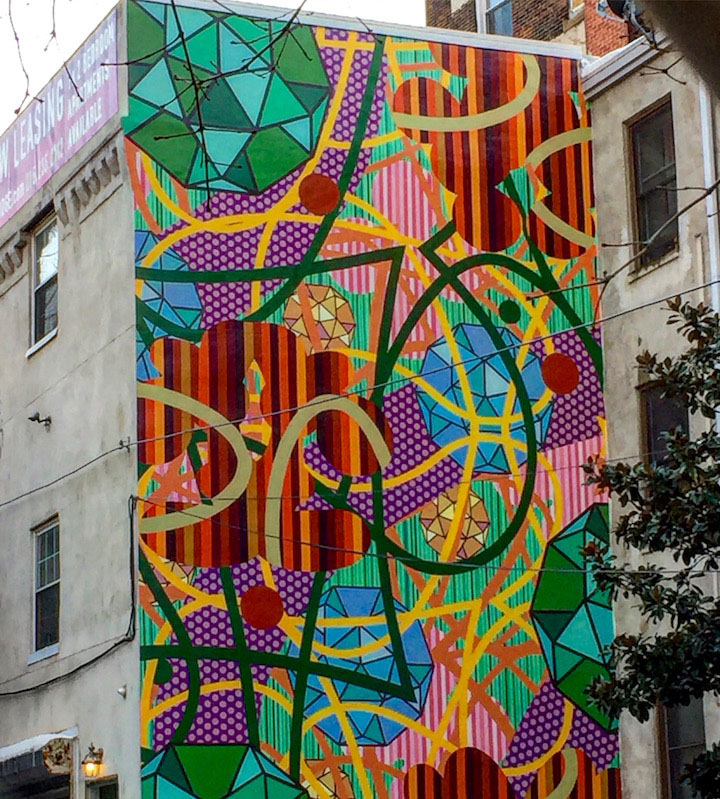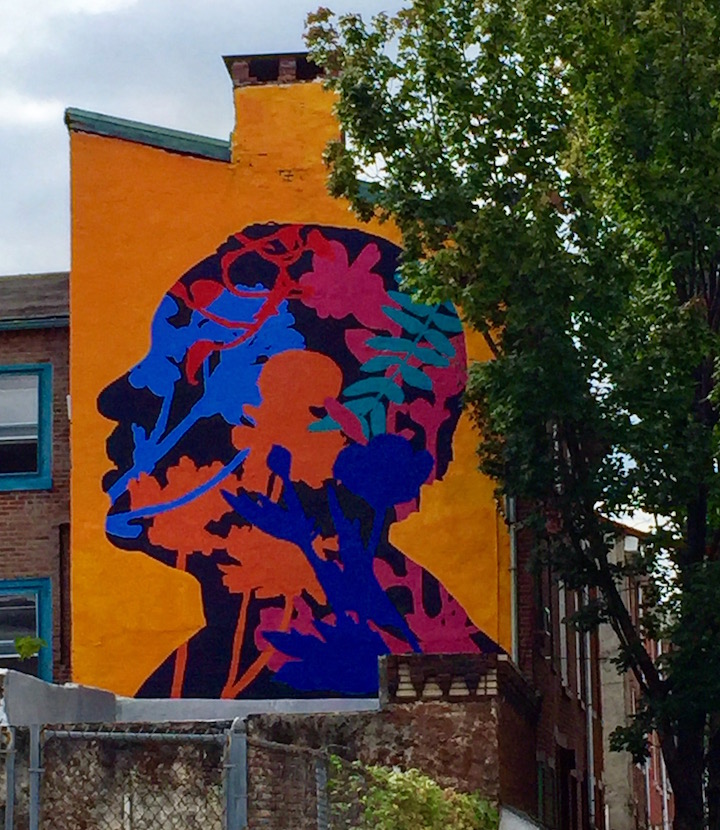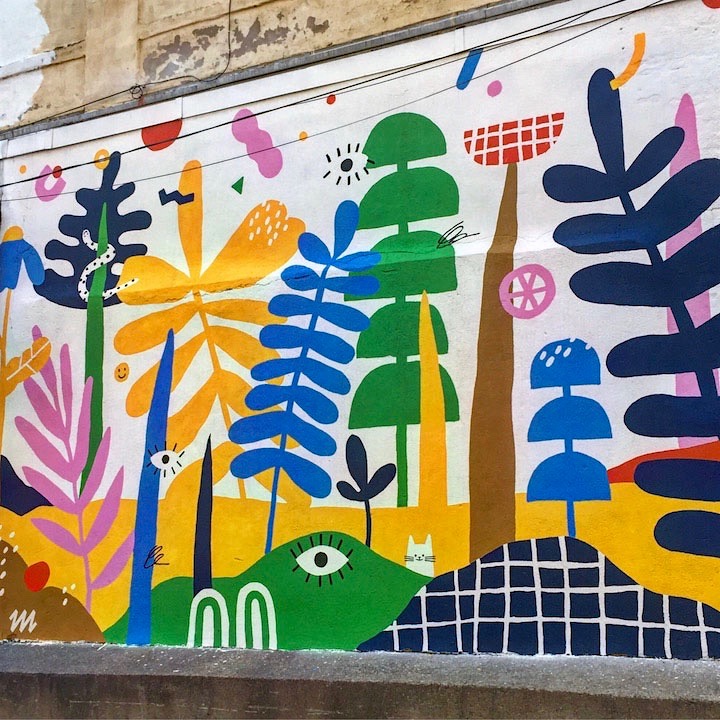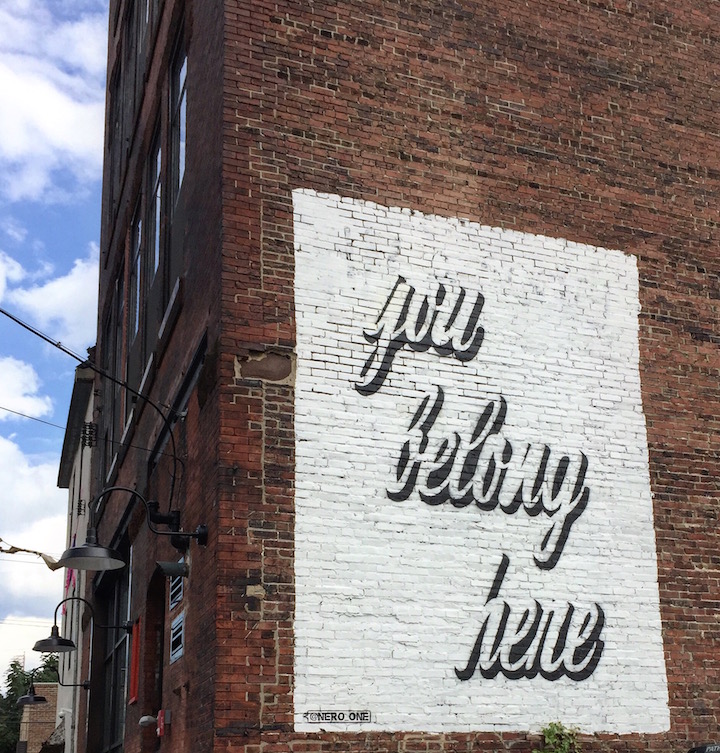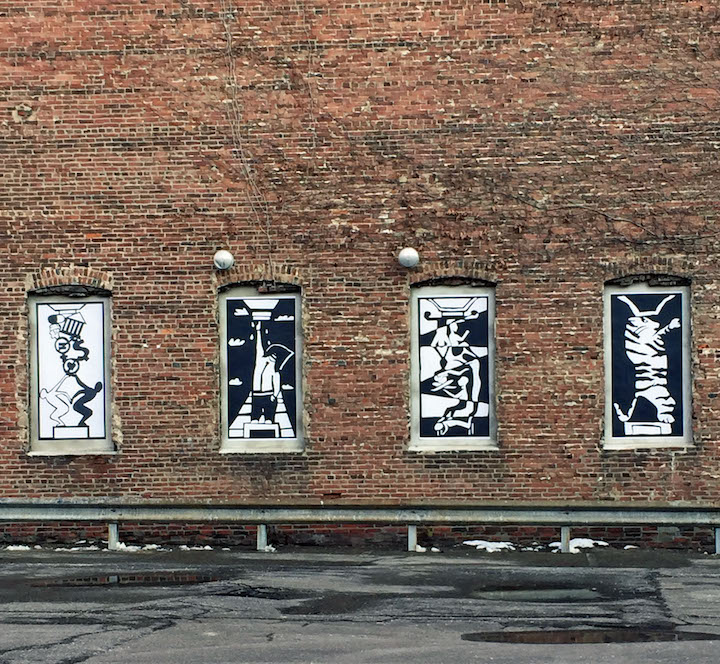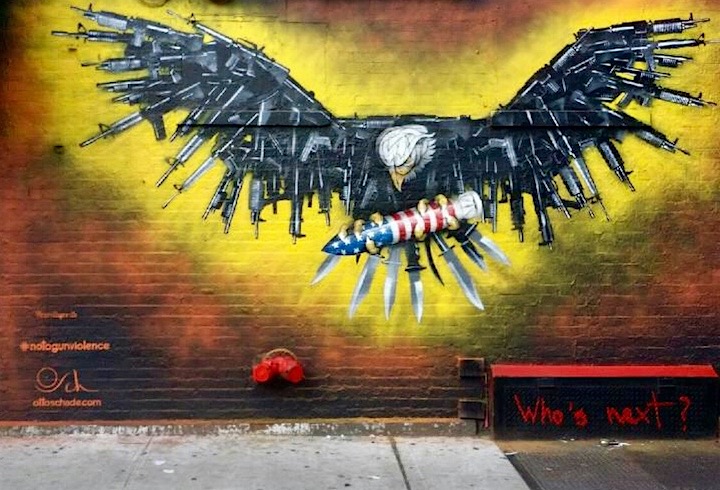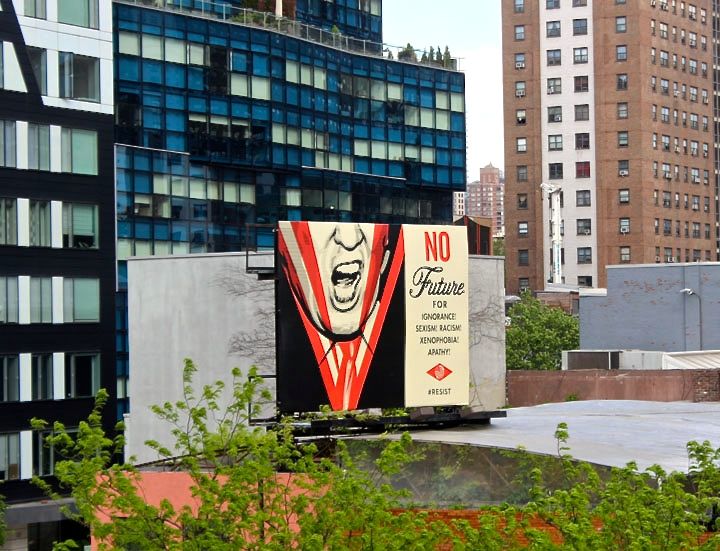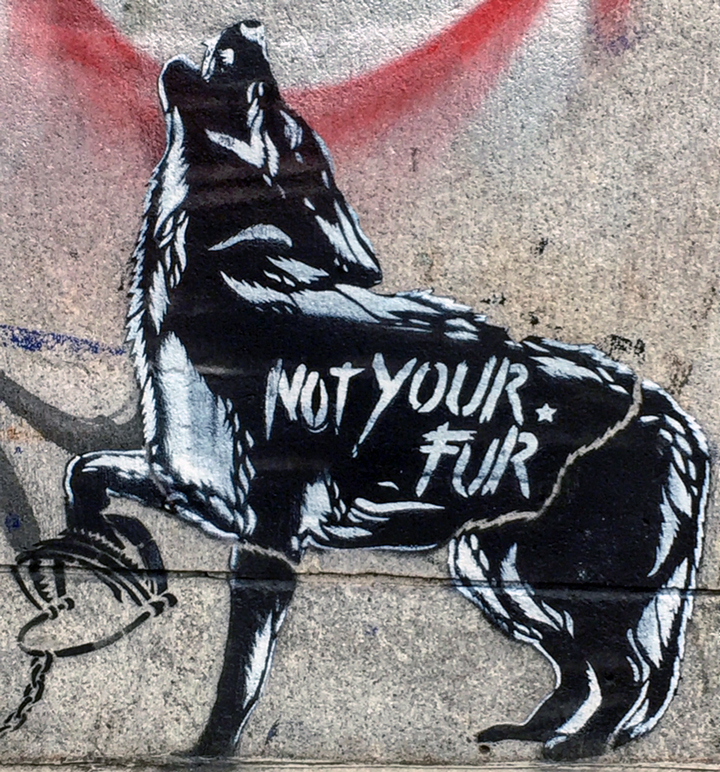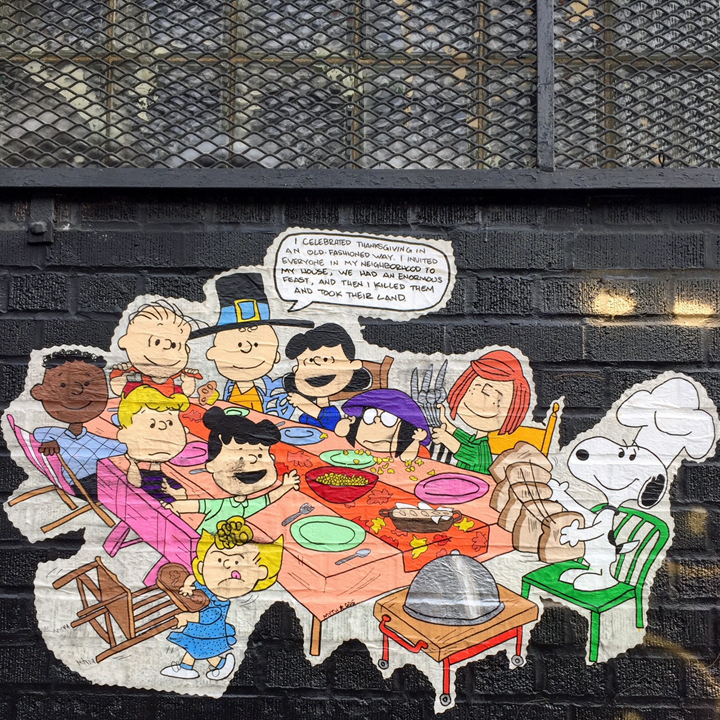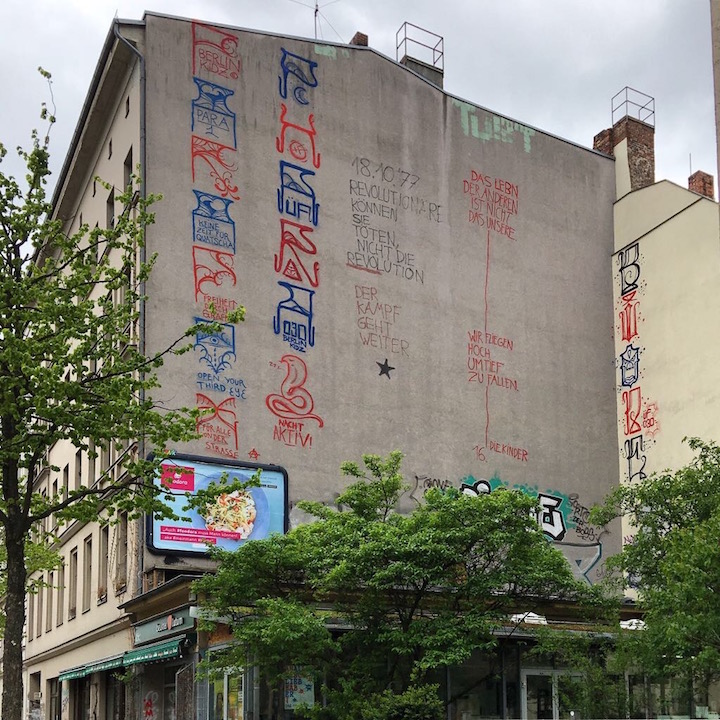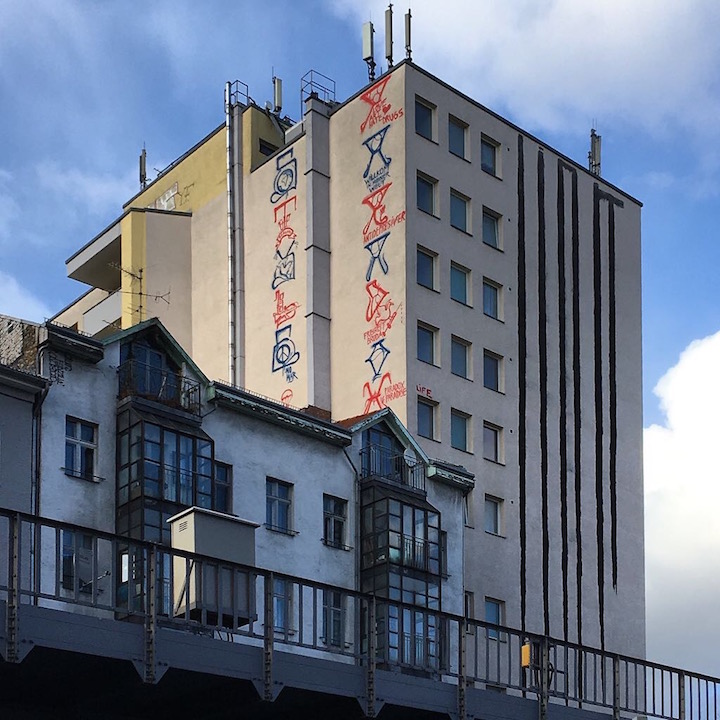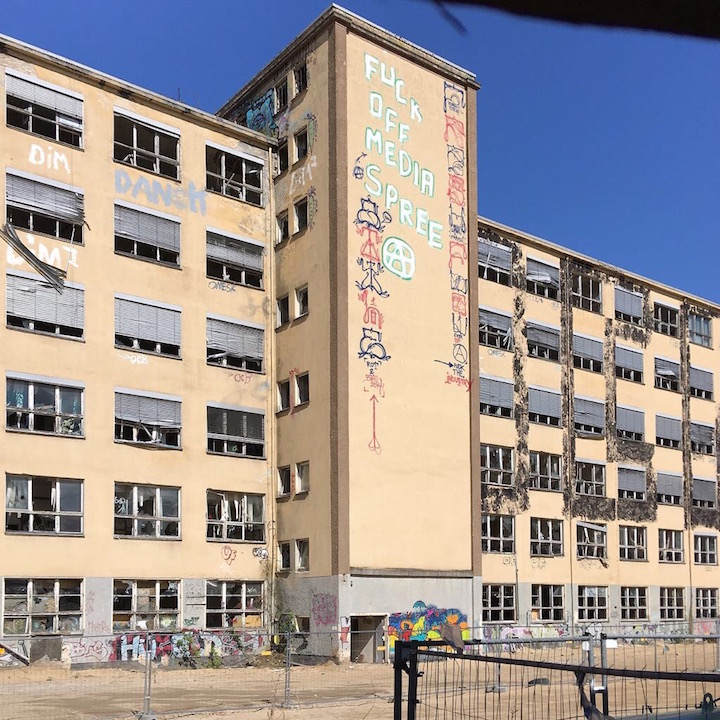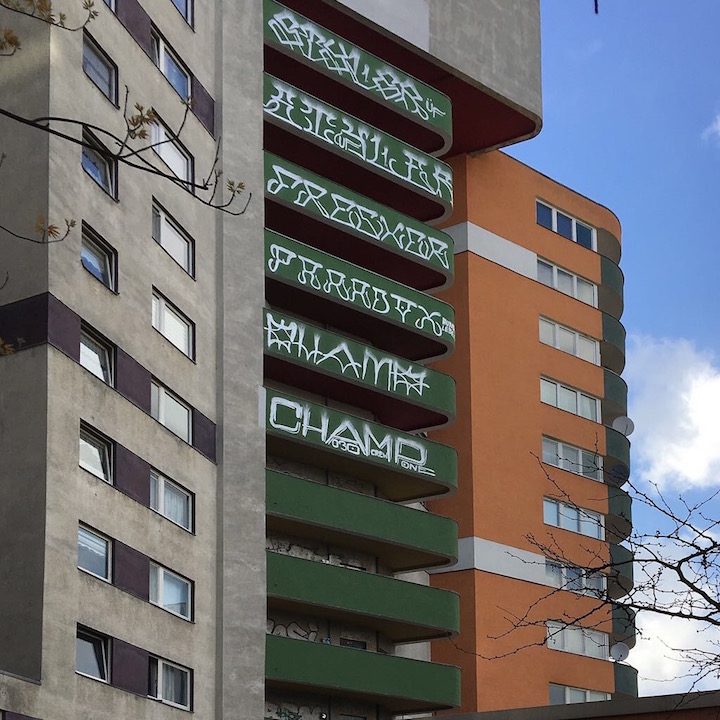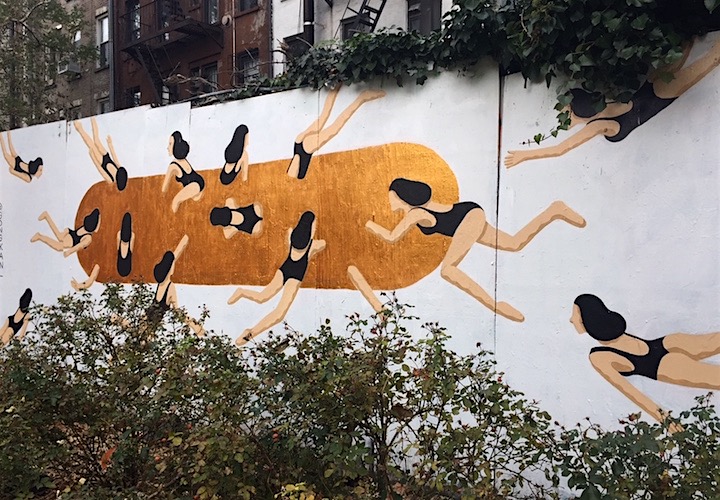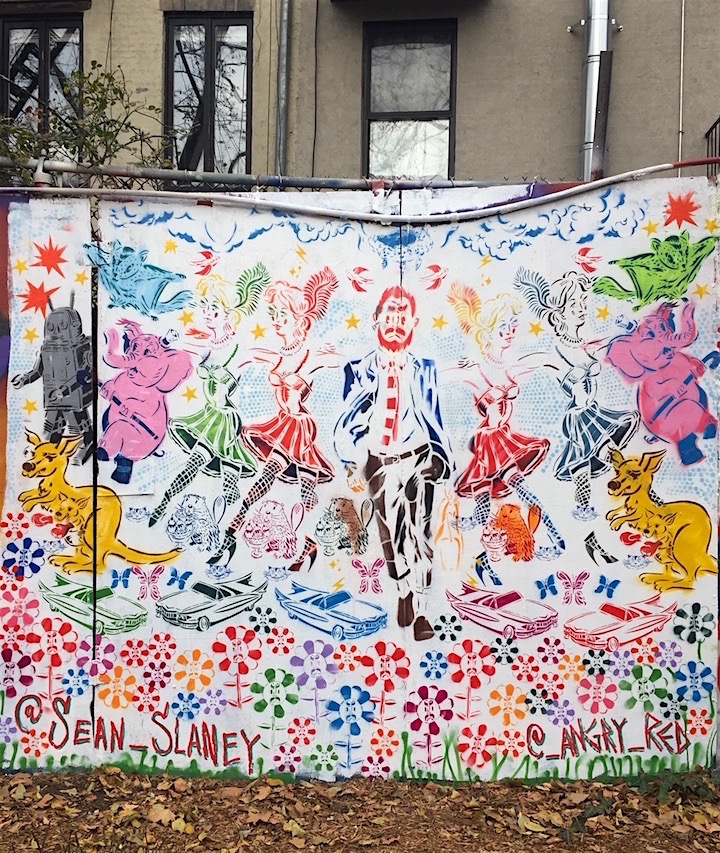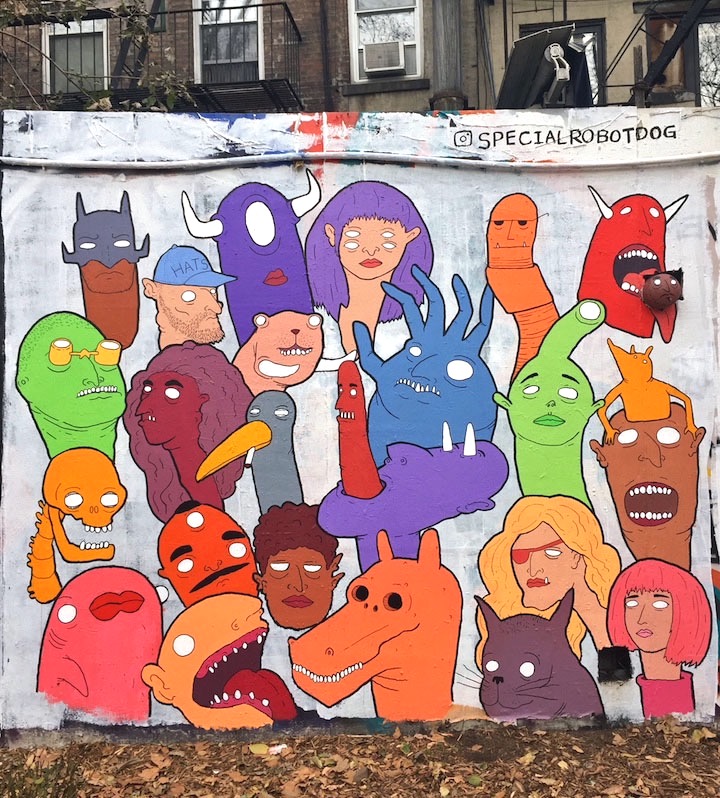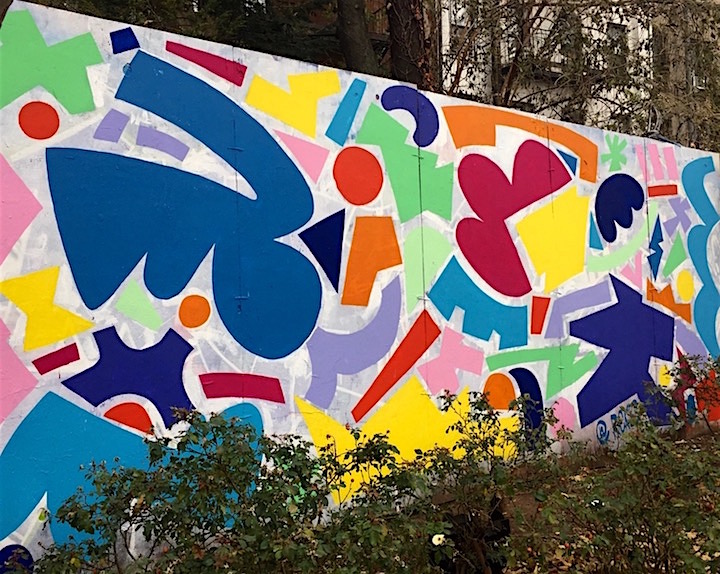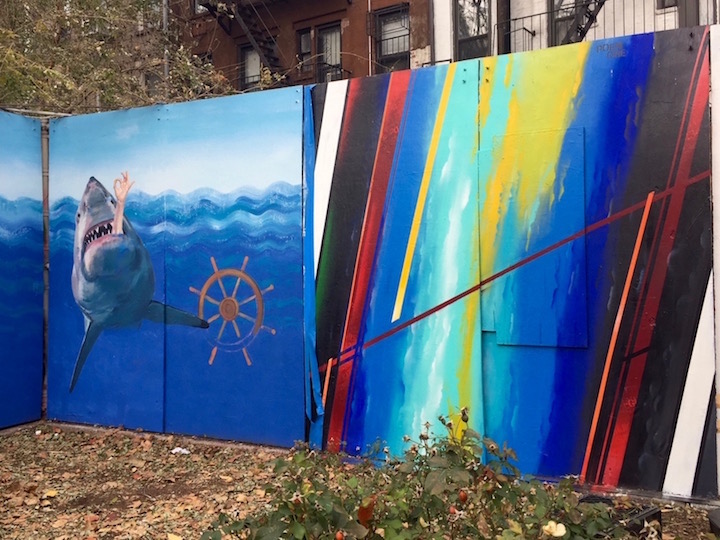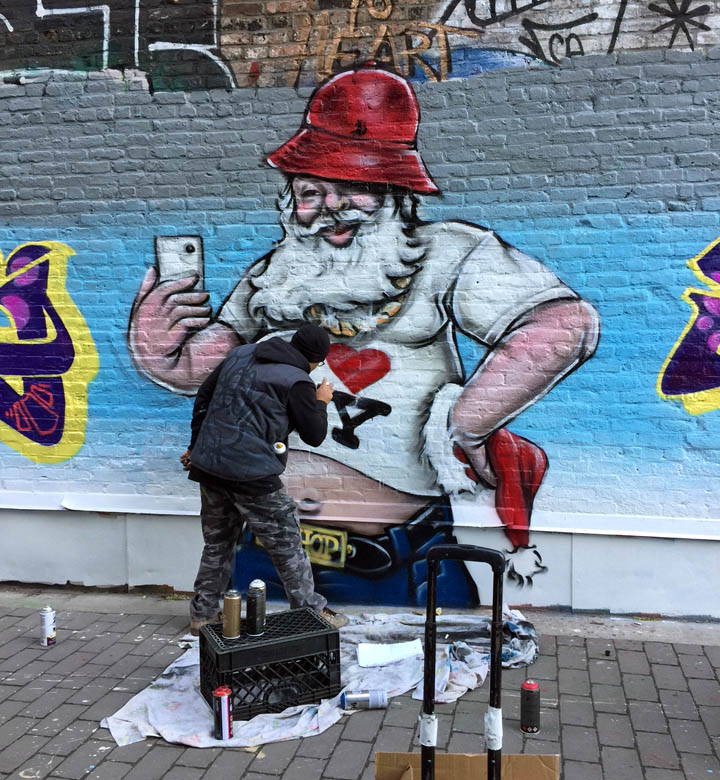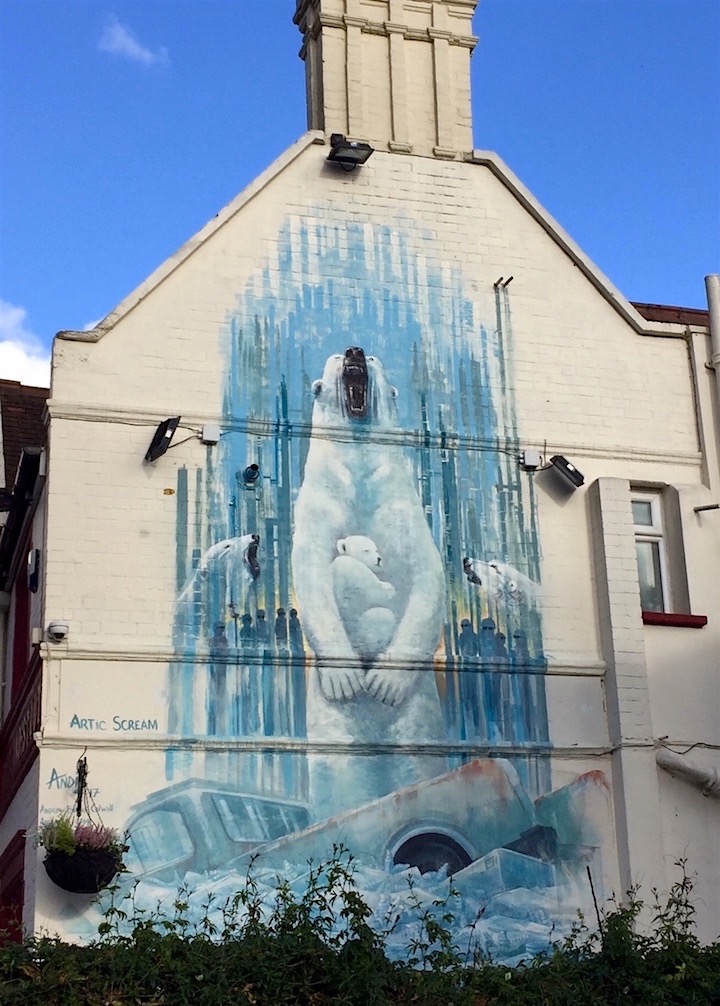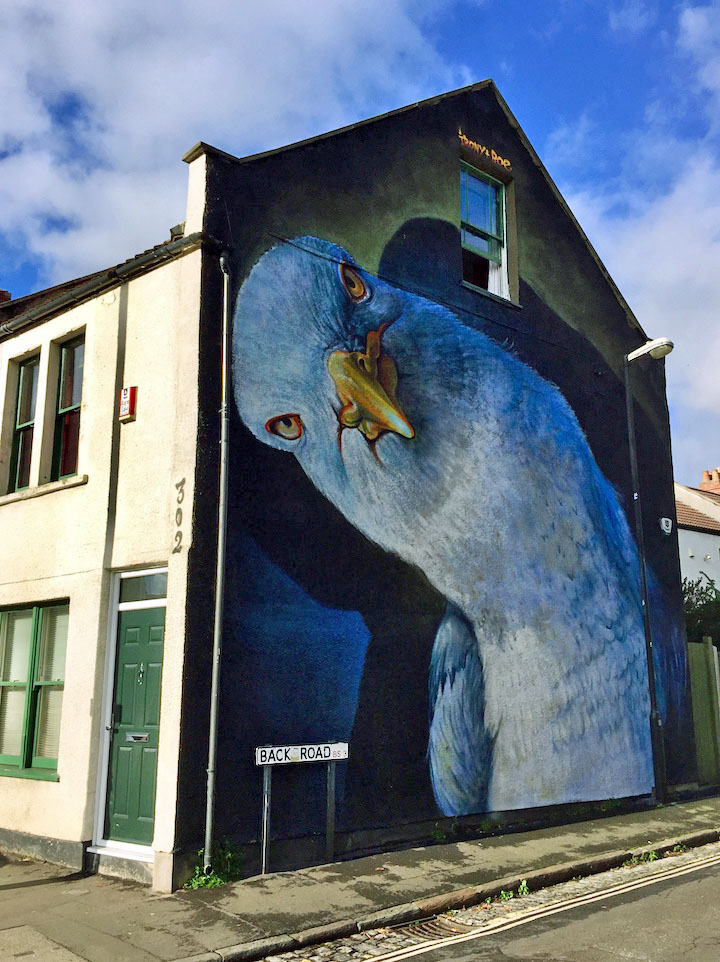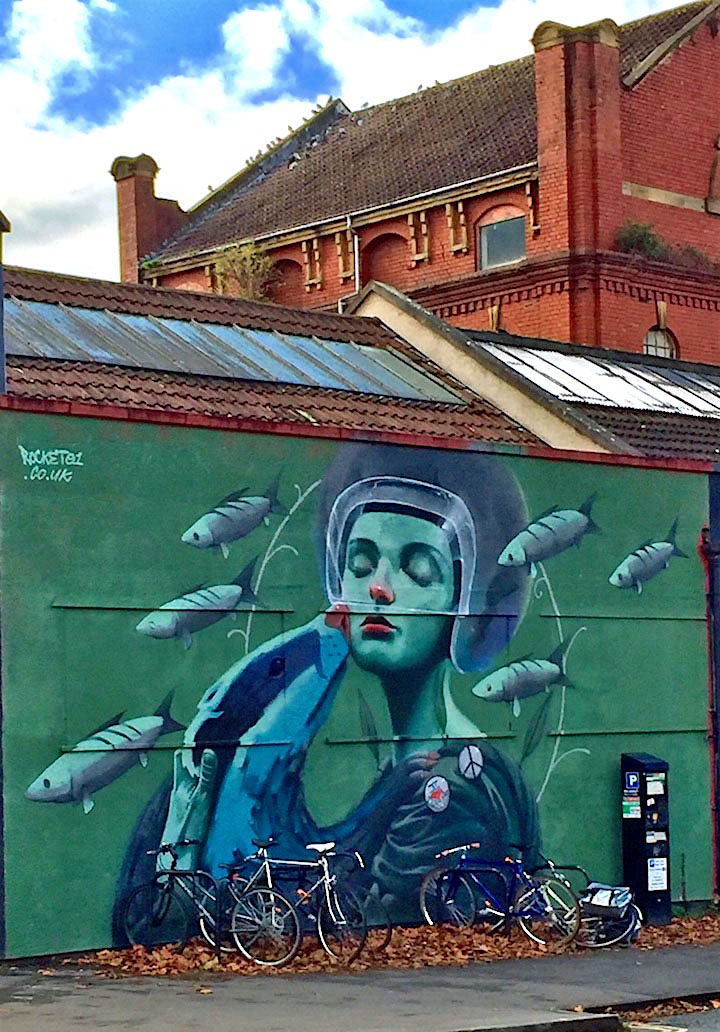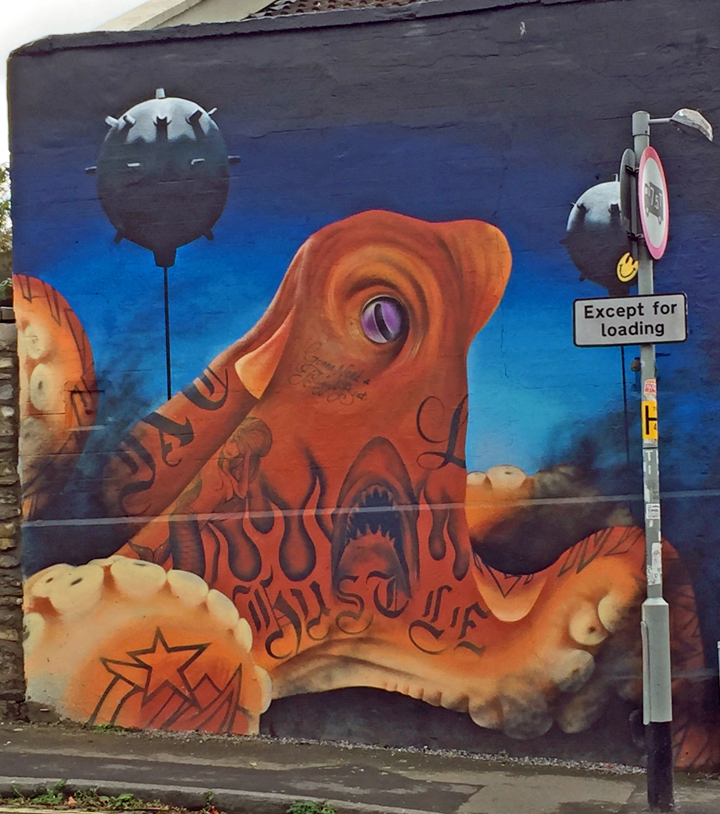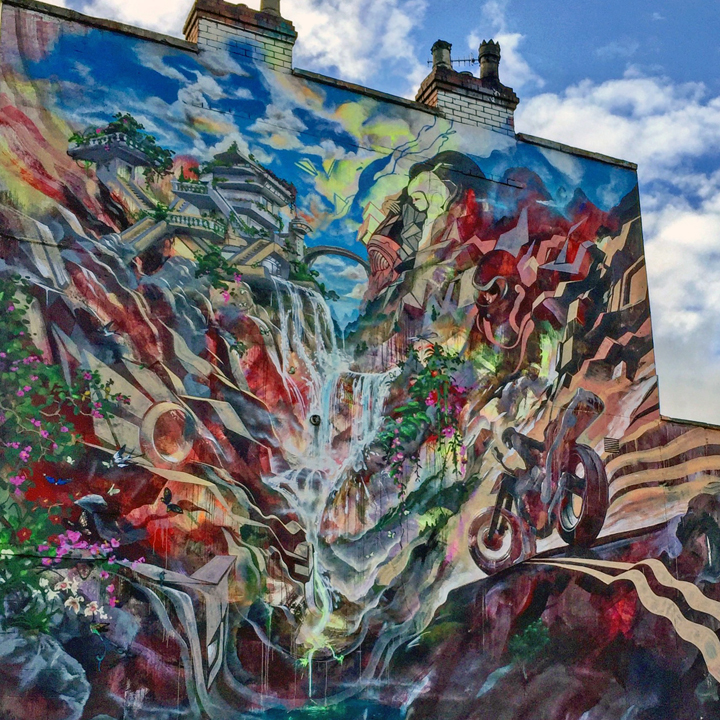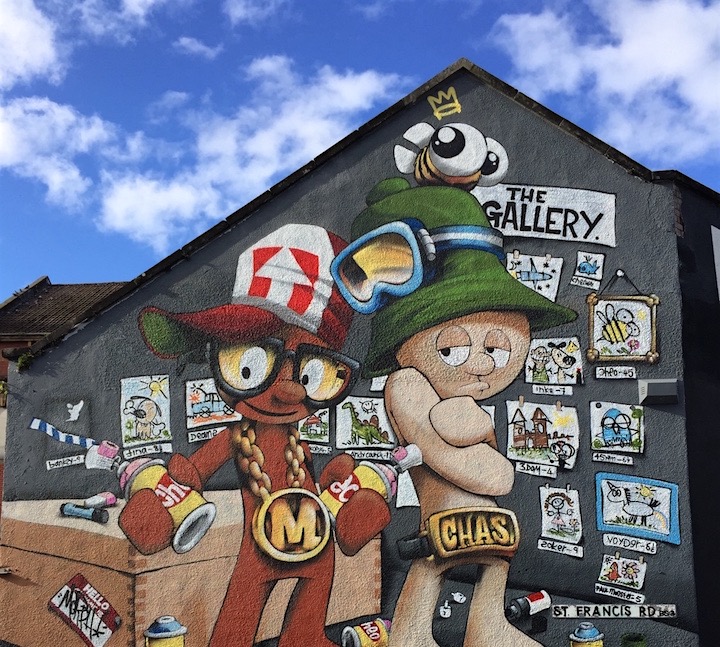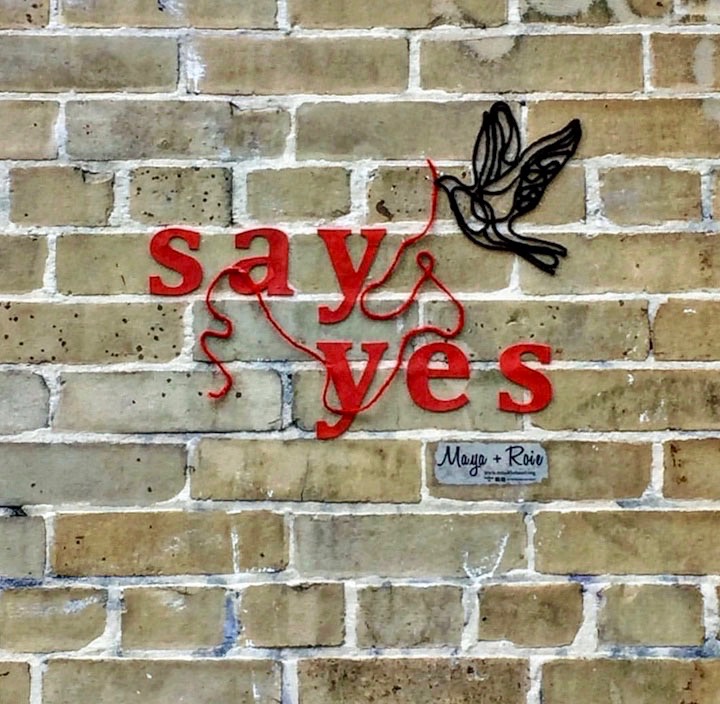
Maya Gelfman & Roie Avidan have been working in public spaces, museums and galleries for more than a decade. Maya’s works have been featured in international art books in Germany and France, and in 2015 Paper Magazine named Maya among the top ten street artists in Israel. Roie has produced documentaries and music videos and published photographs in dozens of newspapers and magazines, print and online. Their collaborative worldwide public-art project Mind the Heart! is entering its tenth year. This past fall, their project brought them to New York City, where I had a chance to meet up with the inspiring, talented couple.
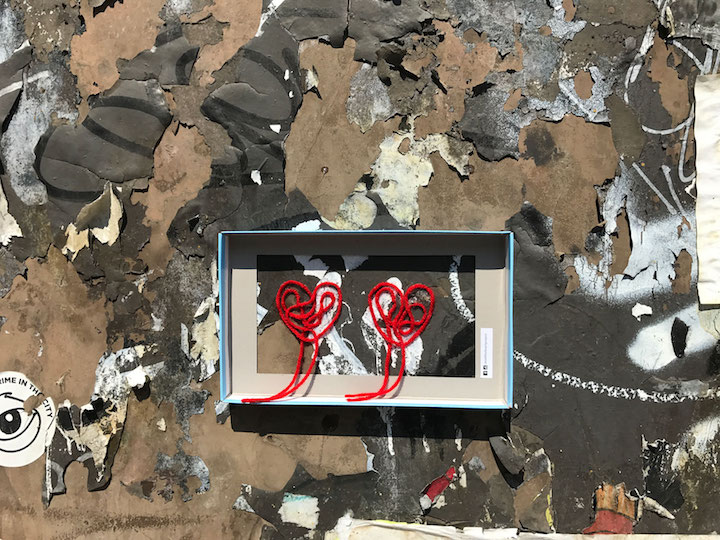
Can you tell us a bit about your backgrounds?
Maya: I’ve always been doing art. I graduated from the Shenkar College of Engineering and Design in 2006. My main mediums are installation, painting and street art.
Roie: I am self-taught. I’ve been engaged with visual art for the past 14 years, and nine years ago, I began doing art on the streets. Our work is collaborative, as I generally choose the materials, the concept and the location.
What about your current project Mind the Heart!? What is its mission?
Its principal aim is to promote mindfulness – to ourselves, to our surroundings and to the moment. Many of us – especially those of us who live in the same place for a long time — no longer see the beauty and tend to ignore the ugliness. Too often we become disconnected from one another and miss out on the present.
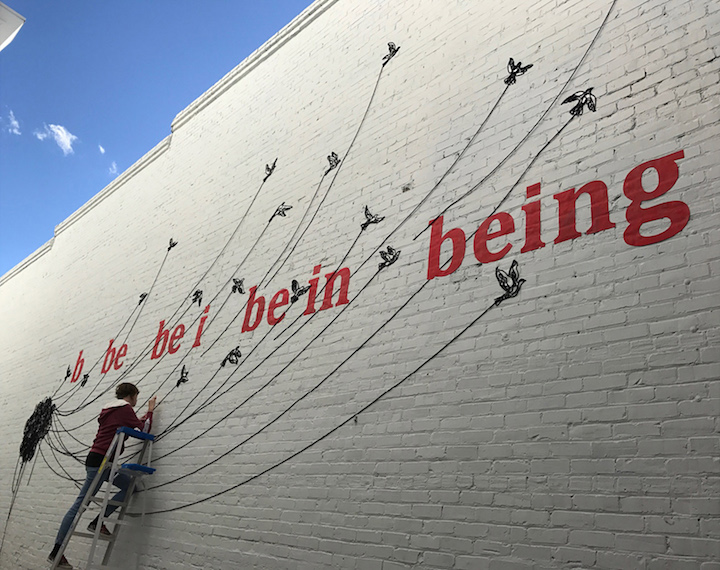
A little red heart has been surfacing in cities you’ve visited. What does it represent?
This tangled red heart – crooked and messy with dripping ends — is the core of our project. We began by using it on the streets of Tel Aviv to mark the beauty in decay and neglect, the order in chaos, the magic in the ordinary, the soul in things. We’ve since handed out thousands of red yarn hearts along with a simple mission: to go and put it out there, to mark your own spots of significance and share them with the world.
Why did you both choose to use the streets as your principal gallery?
We had both shown in galleries, and we wanted to exhibit in a different way. In 2009, we printed hundreds of posters and placed them on the streets. Within 12 hours, everything was gone. We immediately fell in love with the connection we made with those who viewed our art. We love that street art is completely free.
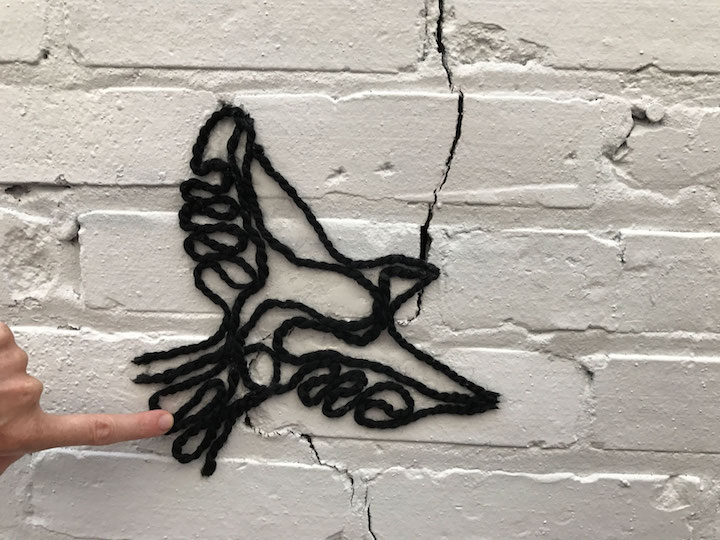
You are now visiting cities throughout the US. Which cities have you previously visited to share your artwork and to engage people in your project?
We’ve visited various cities throughout Israel. Among the 40 cities we’ve collaborated in are: Florence, London, Paris, Brussels, Amsterdam and Bangkok. We were also invited to orphanages in Kenya and Uganda.
What is the riskiest thing you’ve ever done in the course of executing your project? And why were you willing to take that risk?
Standing on a wobbly 15 foot ladder at a hotel in Florence. The ladder could have fallen at any moment. There was no sense of security. Why did we do it? We just didn’t think about it. It was something that we had to do…something that we needed to do at this time and place.
Are there any particular cultures that have influenced your aesthetic, particularly this project?
The culture of the American Beat Generation; the notion of “the open road,” and its sense of freedom; Japanese motifs; texts inspired by Taoism; major Russian literature; rock & roll; Kurt Cobain and Leonard Cohen.
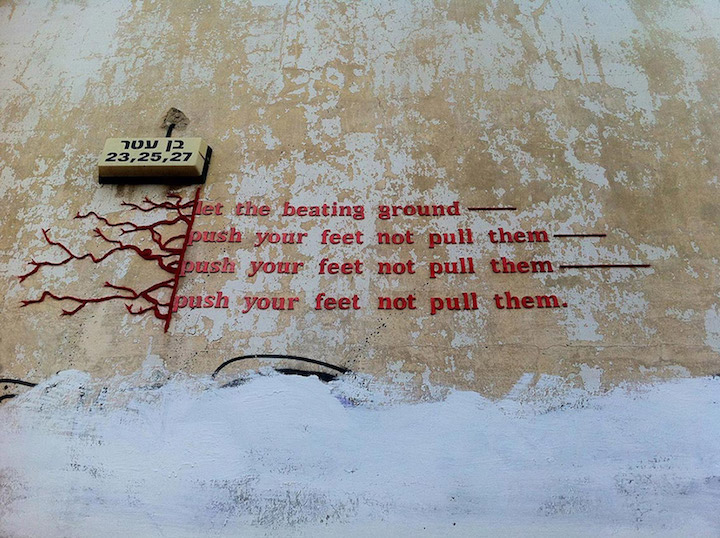
What inspires you these days?
Anything and everything!
Have you ever been arrested for your public work?
When we are caught in the act, it becomes a conversation.
What is the attitude of your families and friends towards what you are doing?
They are supportive.
What percentage of your time is devoted to art?
100%
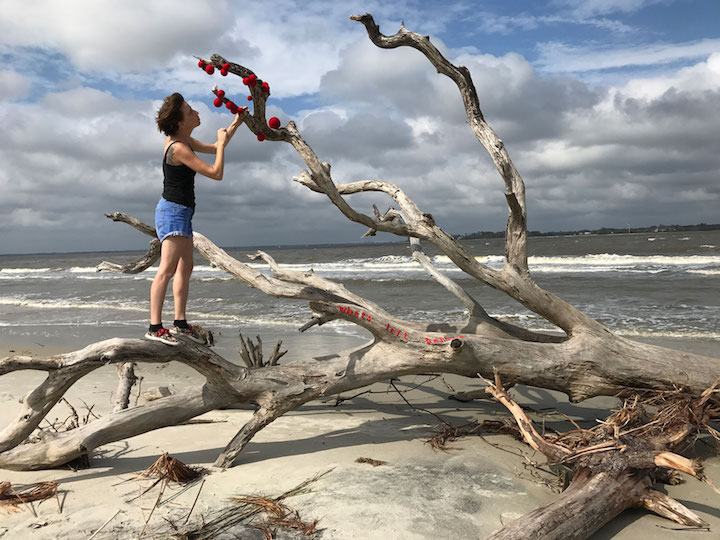
In addition to your tangled red heart, what other media do you use in Mind the Heart!
We use yarn, shoe-box lids, duct-tape and foam.
Are you generally satisfied with your finished product?
The vast majority of the time.
What do you see as the role of the artist in society?
To evoke an emotion…to make someone feel something…to invite people to reflect…to make them mindful.
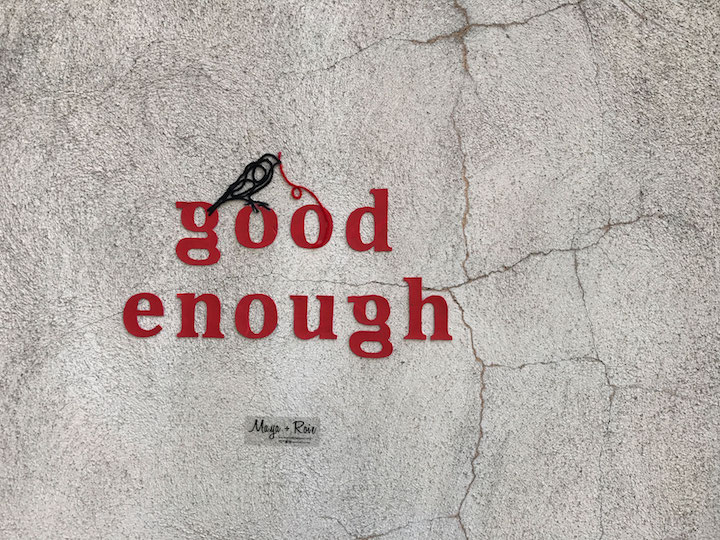
And how can folks become involved in your project?
They can contact us with ideas for places, people, collaborations, events, murals, and any creative or serendipitous idea they may have.
Locations of featured images:
1 Bushwick, Brooklyn
2 East Village, Manhattan
3 & 4 Decatur, Georgia
5 Tel Aviv, Israel
6 Jekyll Island, Georgia
7 Easton, Pennsylvania
Interview conducted and edited by Lois Stavsky.
Photo credits: 1 Lois Stavsky; 2-7 courtesy Maya Gelfman & Roie Avidan.
Note: You can follow the Mind the Heart! project here and on its Instagram account here; you can, also, support the project here.
{ 0 comments }
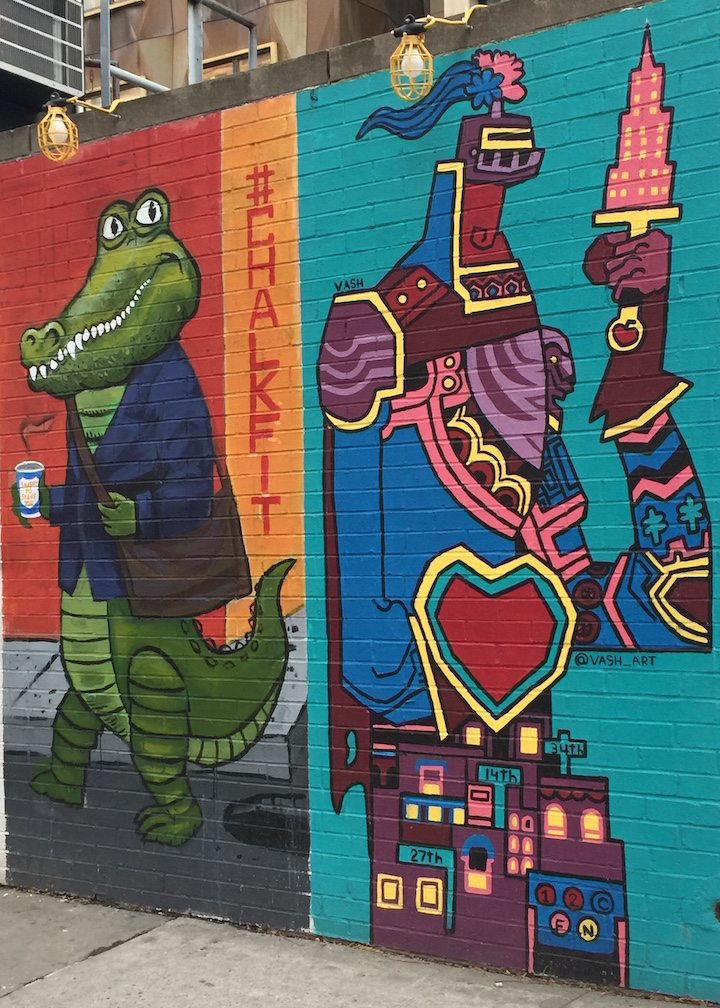
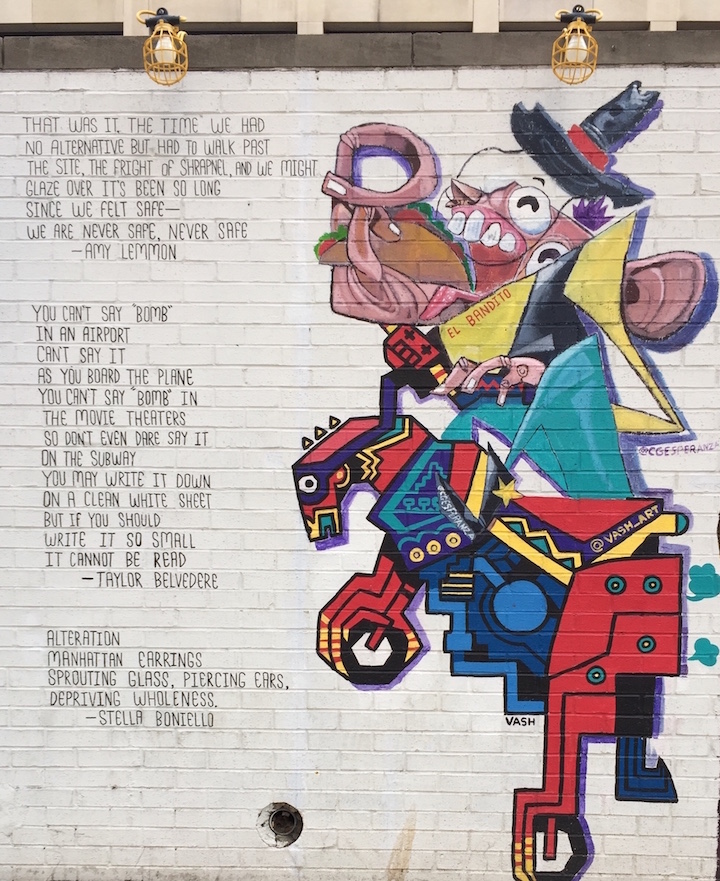
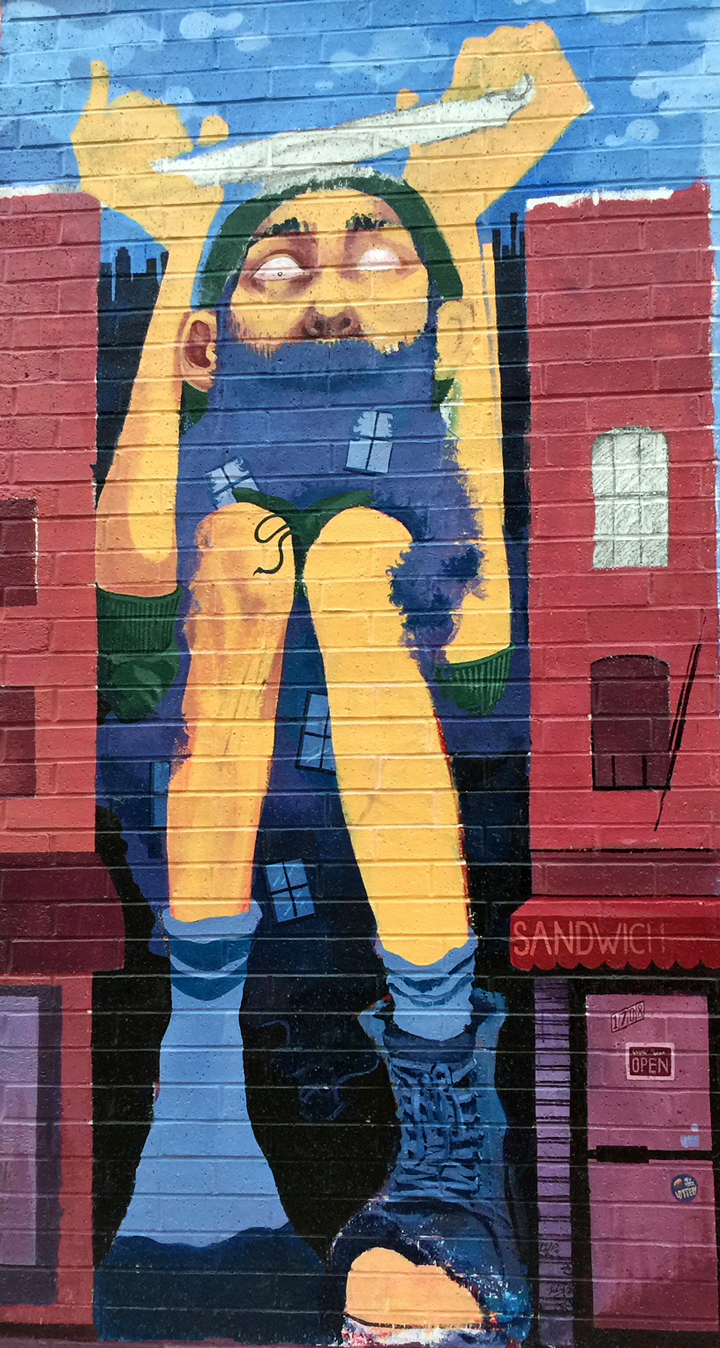
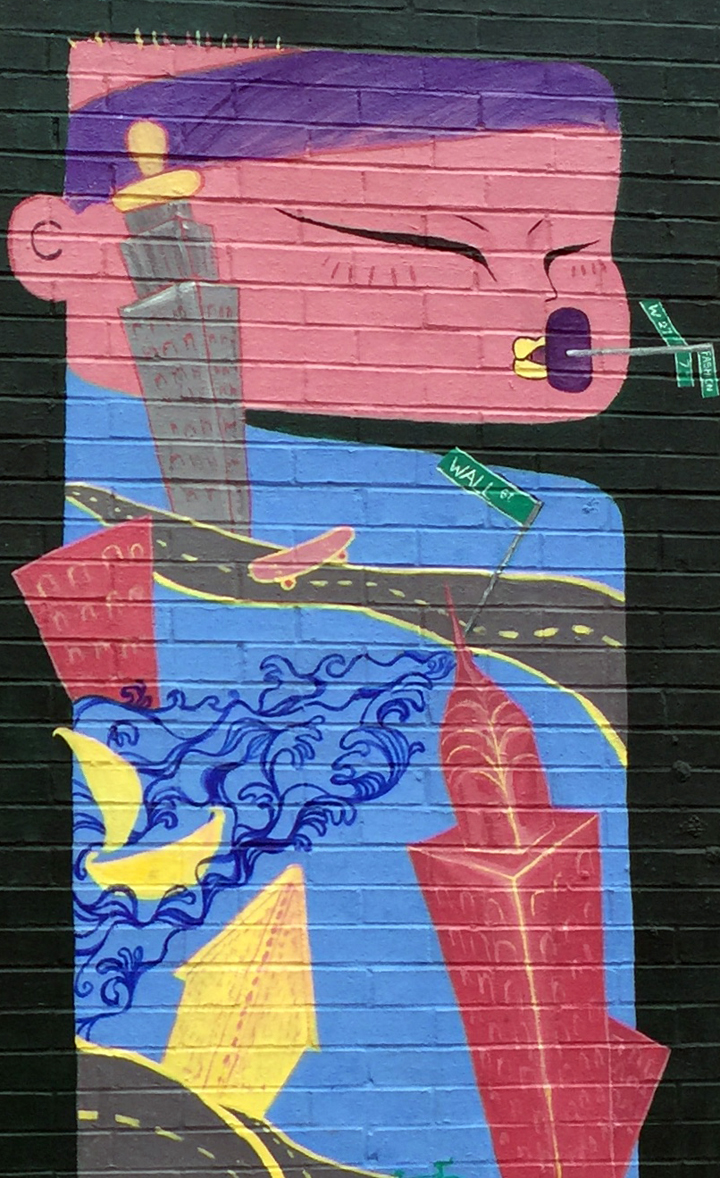
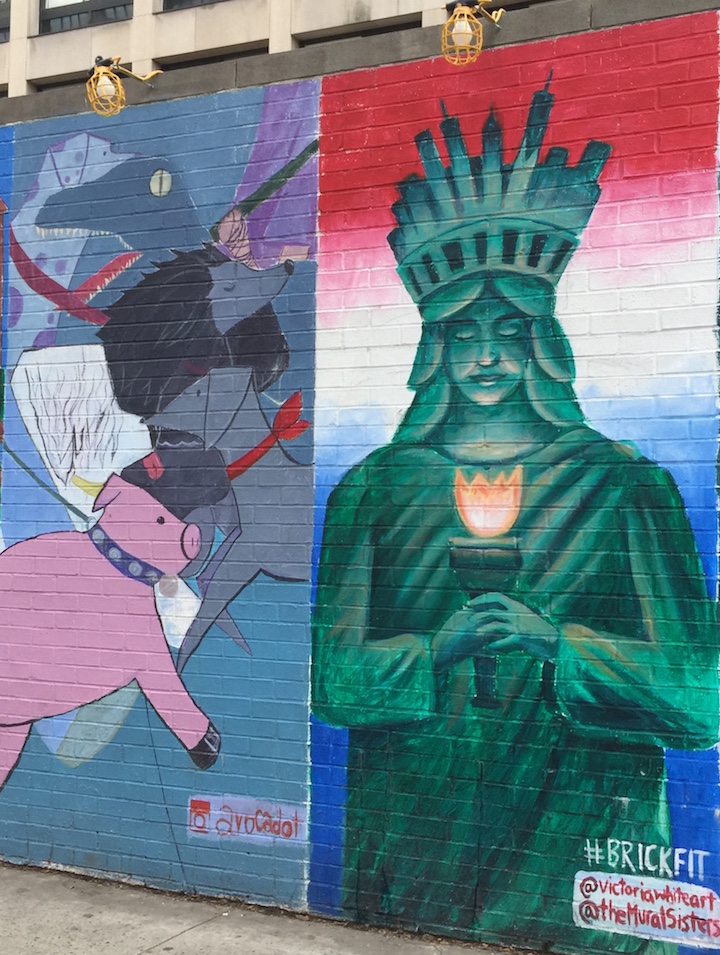
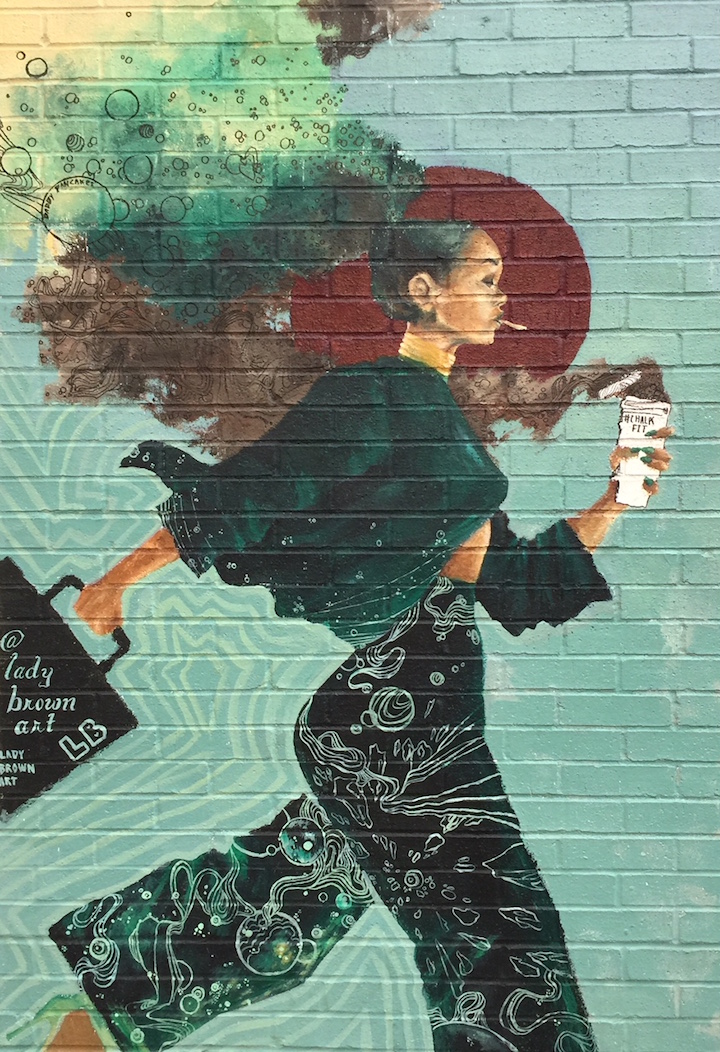

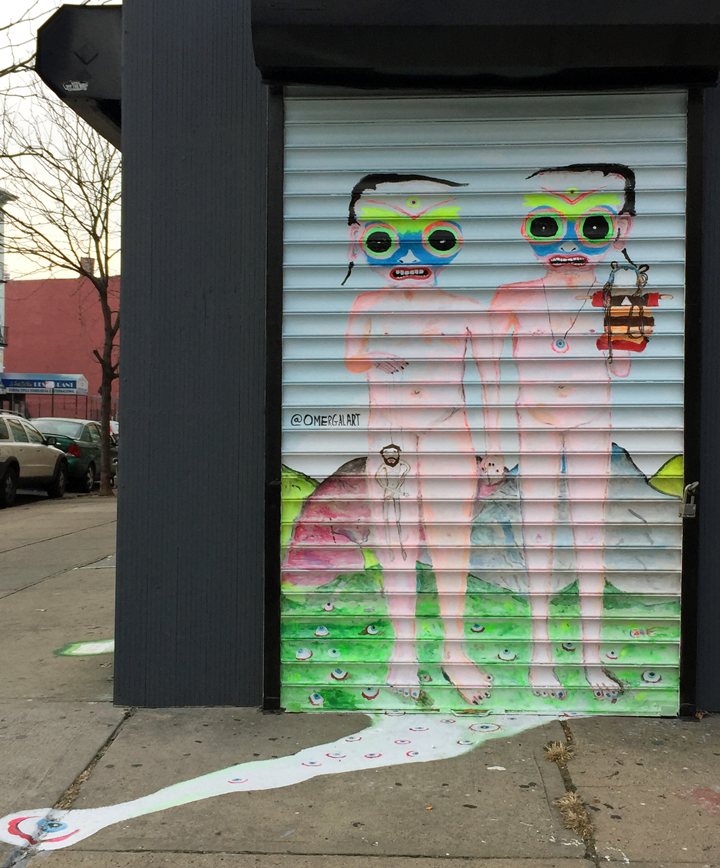
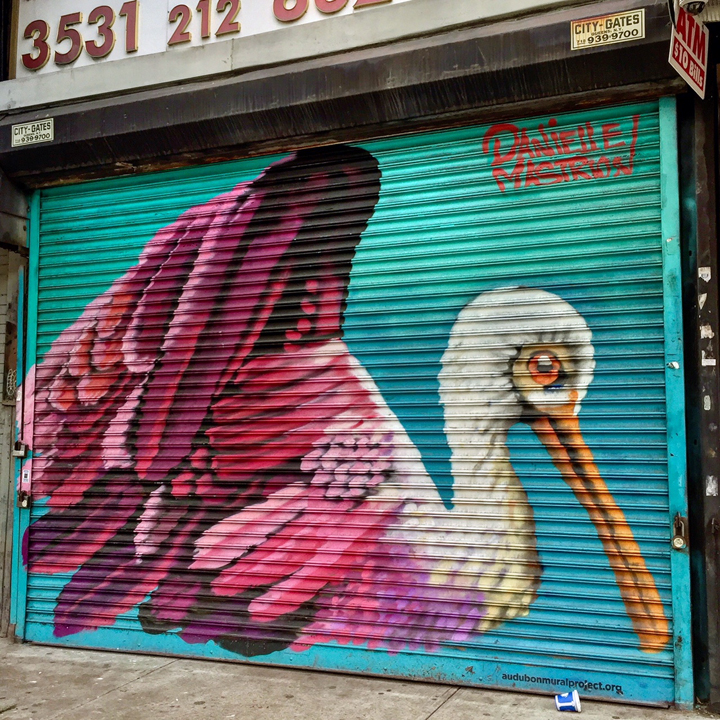
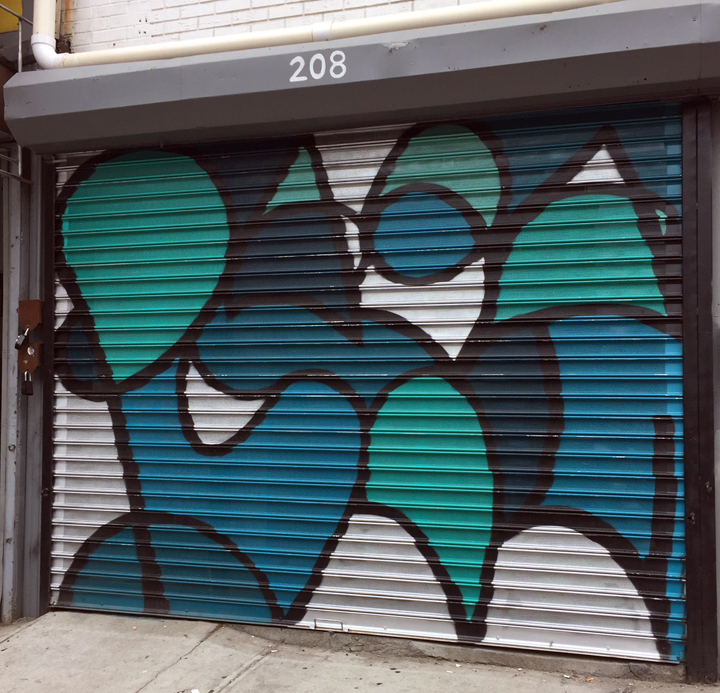
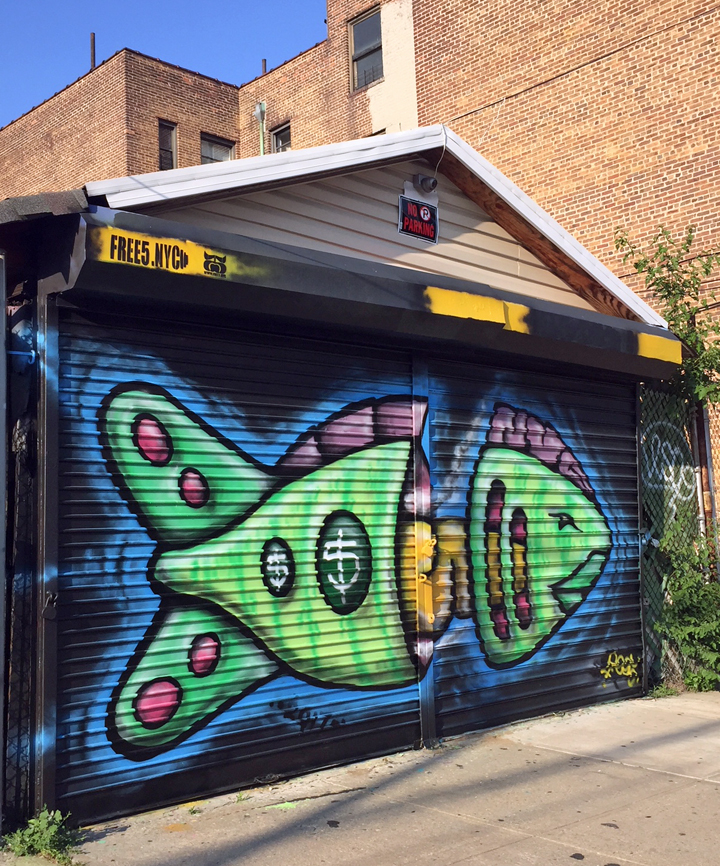

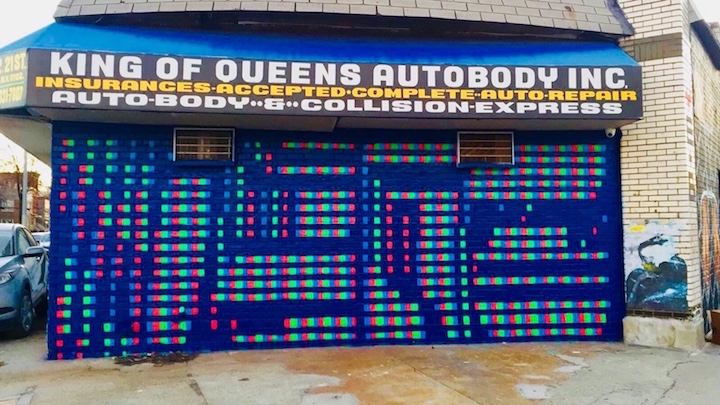
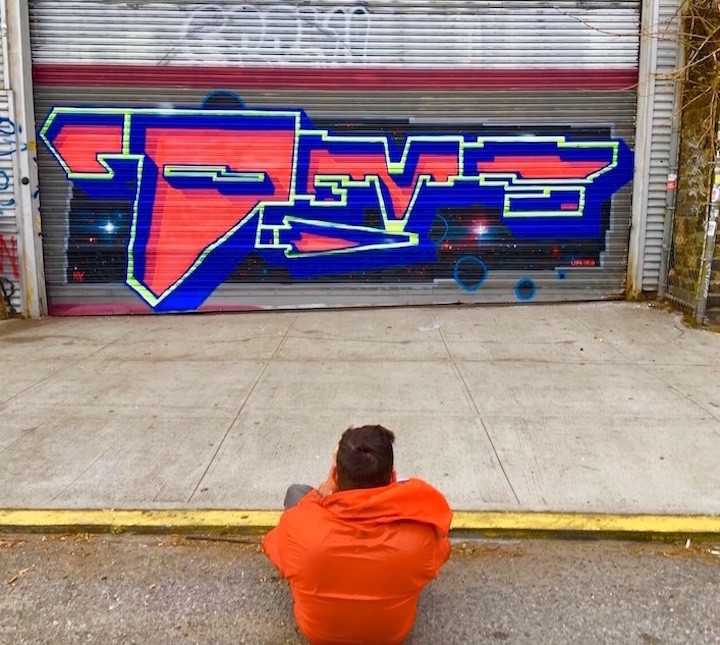
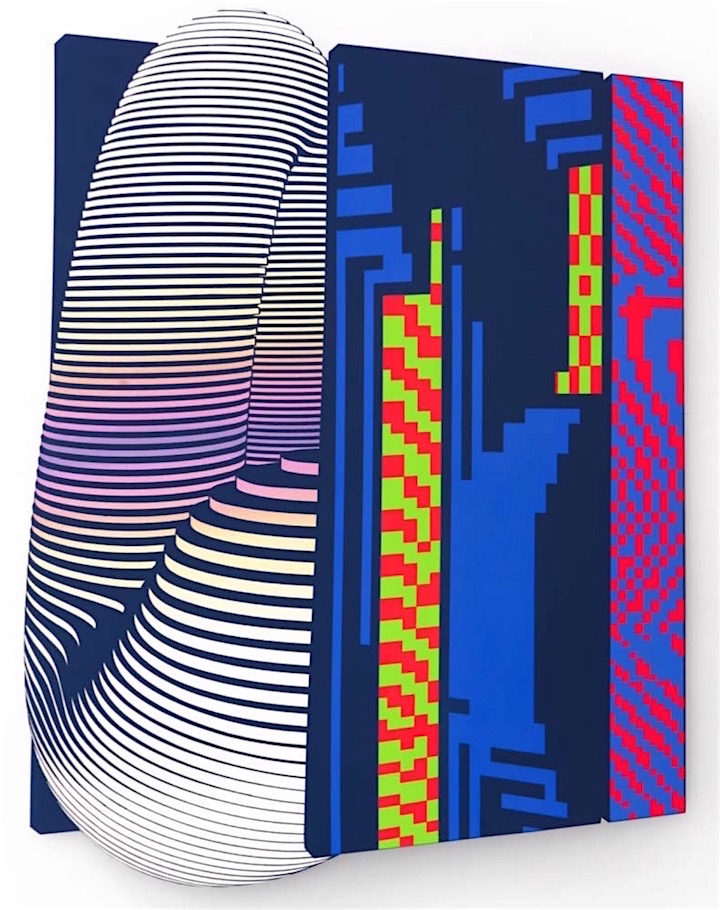
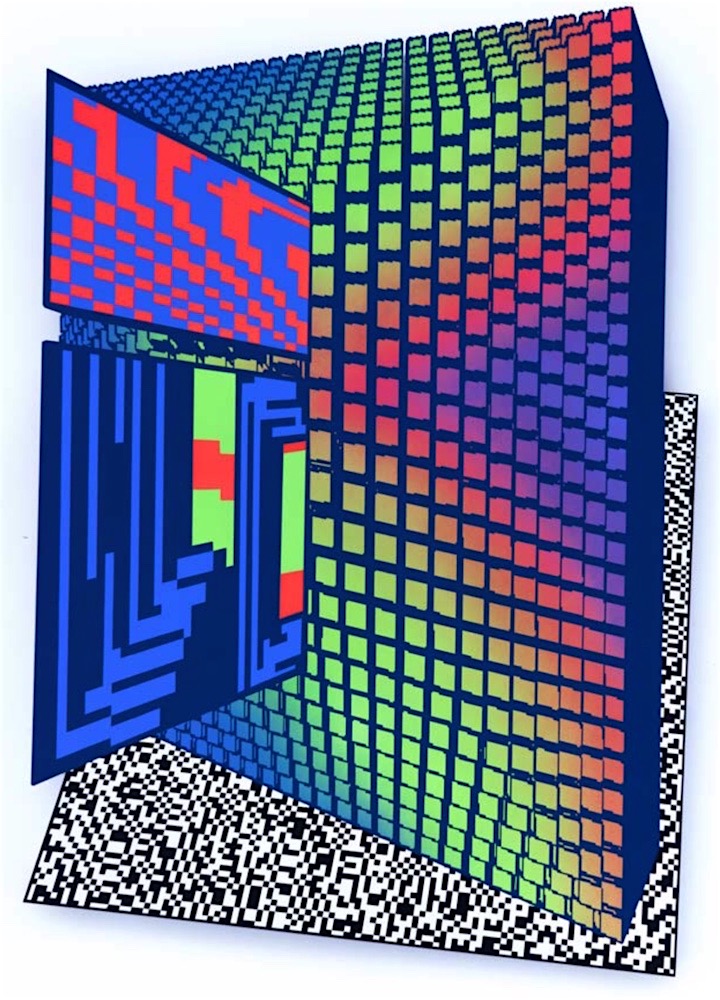
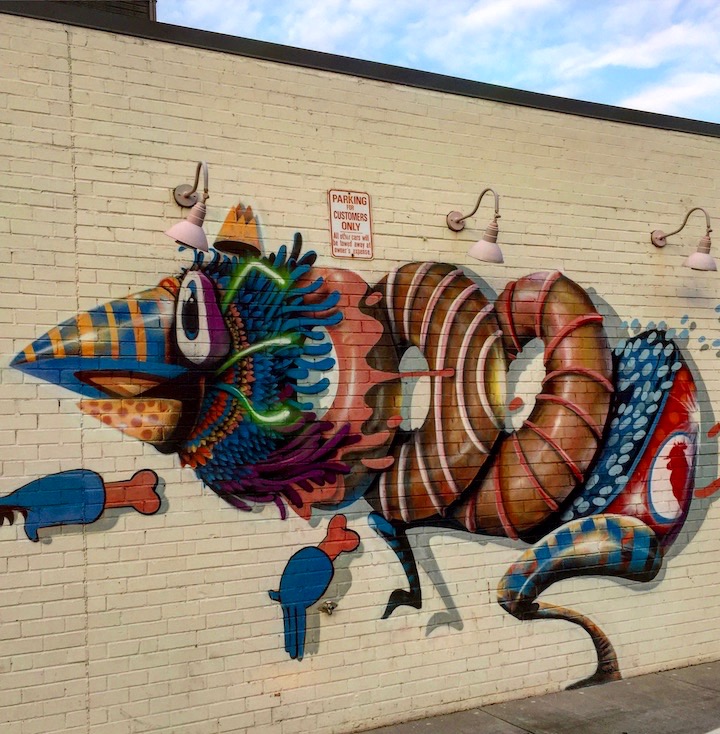
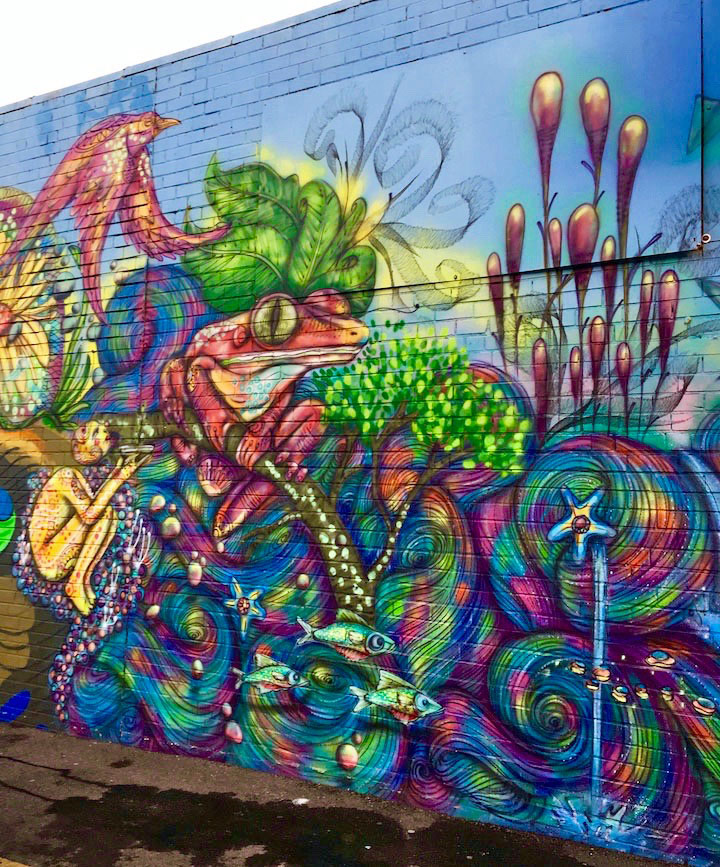
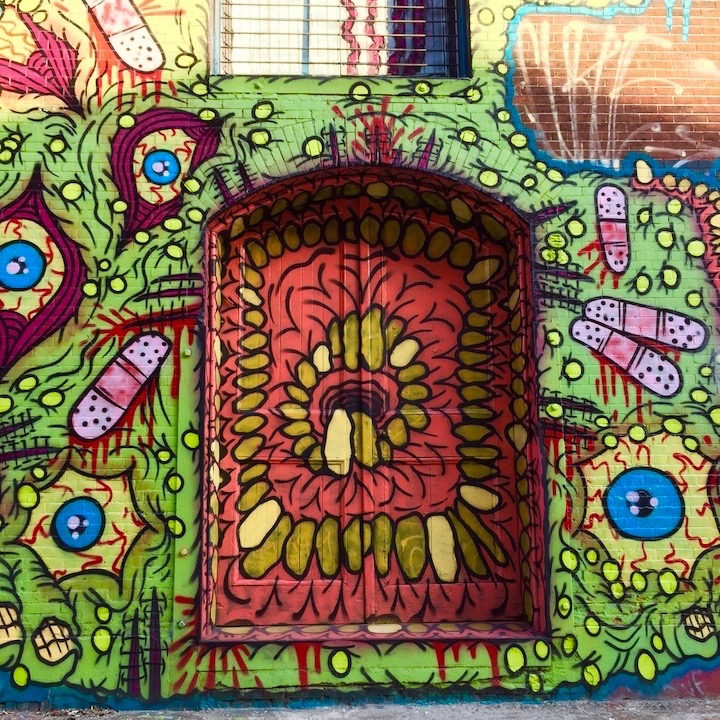
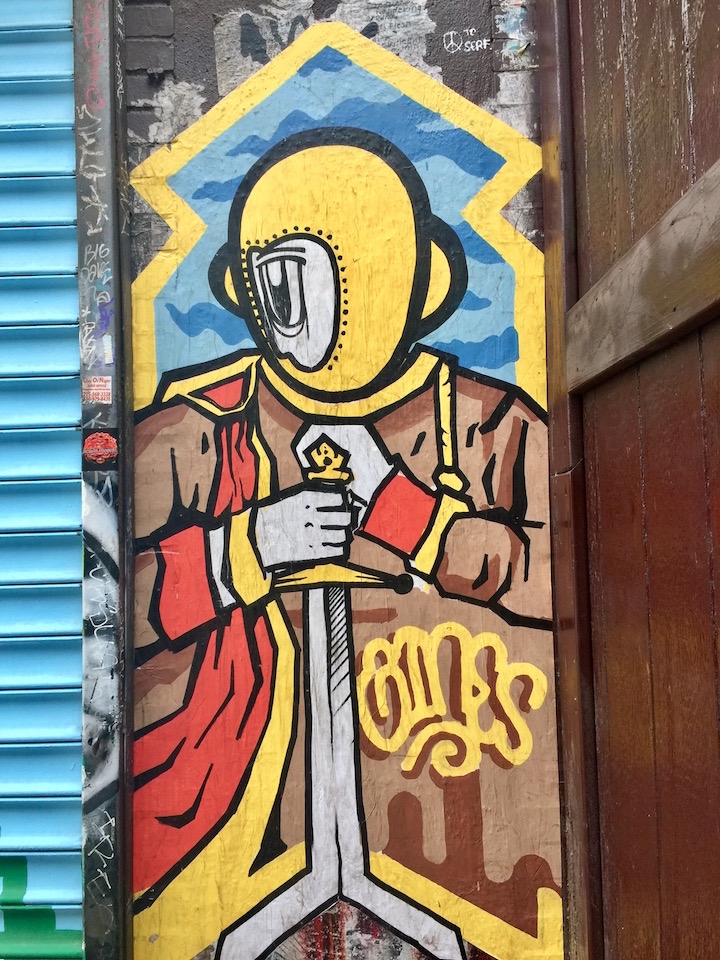
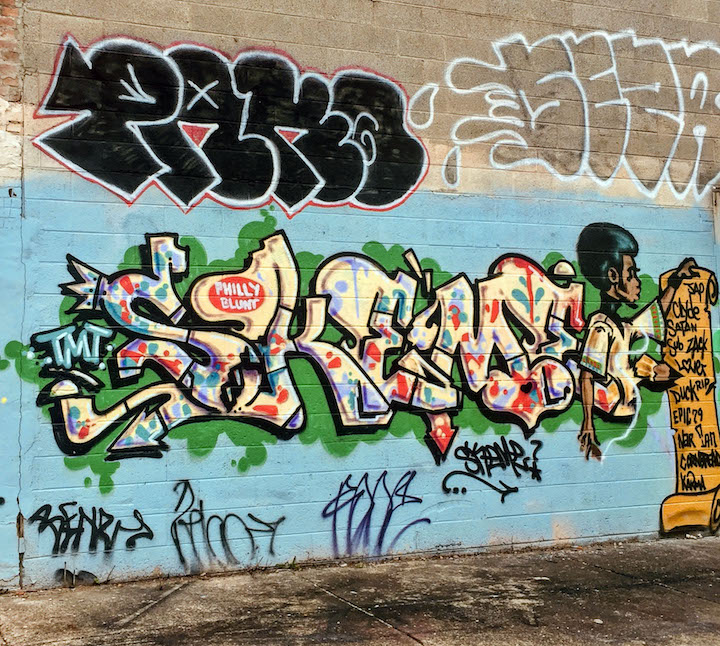
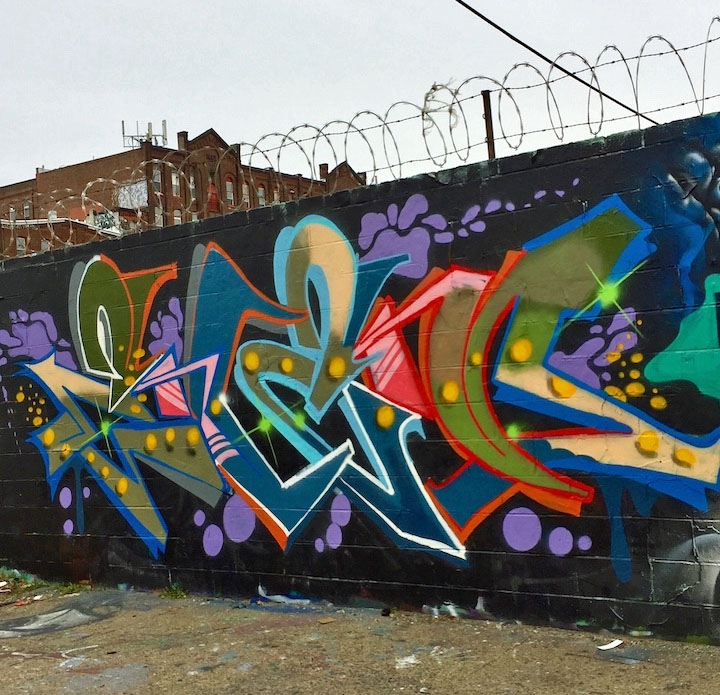
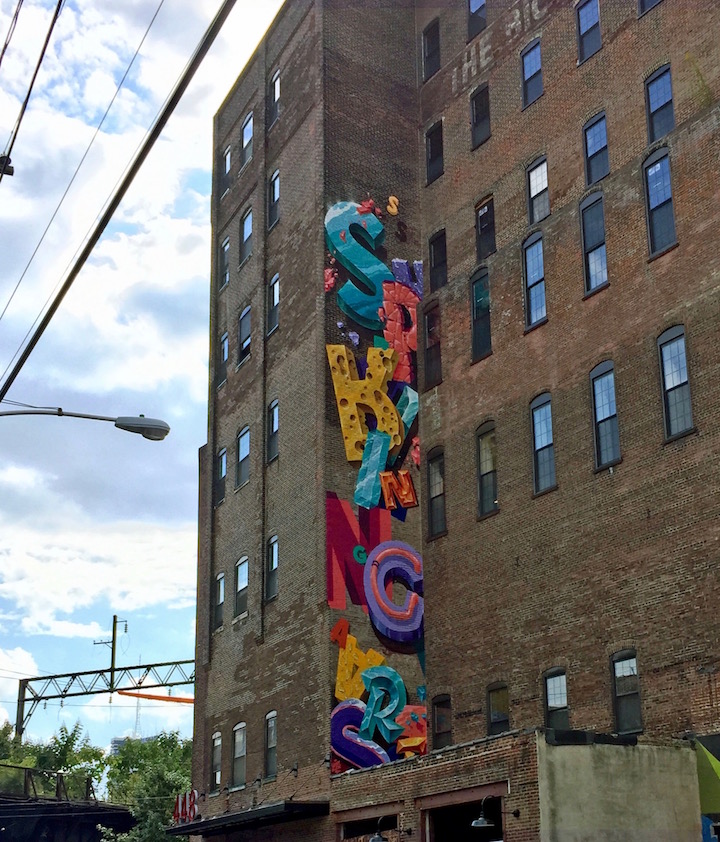 The streets in the vicinity of North 10th off Spring Garden Street in Philly are home to an intriguing array of street art. Pictured above is the work of
The streets in the vicinity of North 10th off Spring Garden Street in Philly are home to an intriguing array of street art. Pictured above is the work of 